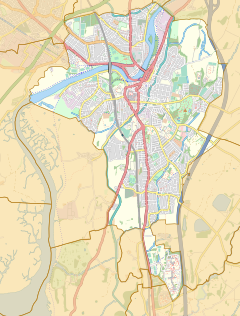
Capernwray Hall is a former country house situated 3 miles east-northeast of Carnforth, Lancashire, England, and is currently used as a Christian Bible school and holiday centre. The house is recorded in the National Heritage List for England as a designated Grade II* listed building. It stands in grounds included in the Register of Historic Parks and Gardens at Grade II.

Edward Graham Paley, usually known as E. G. Paley, was an English architect who practised in Lancaster, Lancashire, in the second half of the 19th century. After leaving school in 1838, he went to Lancaster to become a pupil of Edmund Sharpe, and in 1845 he joined Sharpe as a partner. Sharpe retired from the practice in 1851, leaving Paley as the sole principal. In 1868, Hubert Austin joined him as a partner, and in 1886, Paley's son, Henry, also became a partner. This partnership continued until Paley's death in 1895.

The Storey, formerly the Storey Institute, is a multi-purpose building located at the corner of Meeting House Lane and Castle Hill in Lancaster, Lancashire, England. Its main part is recorded in the National Heritage List for England as a designated Grade II listed building, with its back entrance being listed separately, also at Grade II.
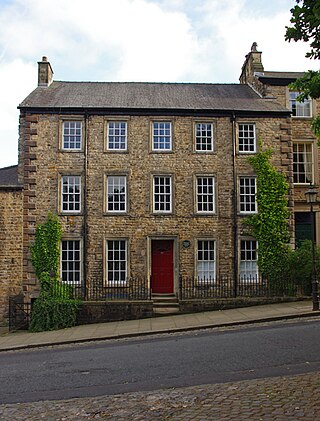
Sharpe, Paley and Austin are the surnames of architects who practised in Lancaster, Lancashire, England, between 1835 and 1946, working either alone or in partnership. The full names of the principals in their practice, which went under various names during its life, are Edmund Sharpe (1809–77); Edward Graham Paley (1823–95), who practised as E. G. Paley; Hubert James Austin (1841–1915); Henry Anderson Paley (1859–1946), son of Edward, usually known as Harry Paley; and, for a very brief period, Geoffrey Langshaw Austin (1884–1971), son of Hubert. The firm's commissions were mainly for buildings in Lancashire and what is now Cumbria, but also in Yorkshire, Cheshire, the West Midlands, North Wales, and Hertfordshire.
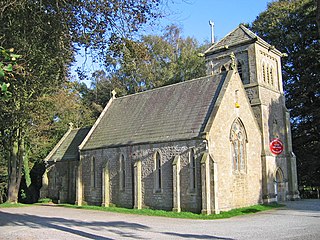
Capernwray Chapel is in the village of Capernwray, Over Kellet, Lancashire, England. Formerly the chapel to Capernwray Hall, it is now an independent Evangelical chapel. It is recorded in the National Heritage List for England as a designated Grade II listed building.

Holy Trinity Church, Morecambe, or Morecambe Parish Church, is in Church Street, Morecambe, Lancashire, England. It is the Anglican parish church of Morecambe, in the deanery of Lancaster, the archdeaconry of Lancaster and the diocese of Blackburn. The church is recorded in the National Heritage List for England as a designated Grade II listed building.
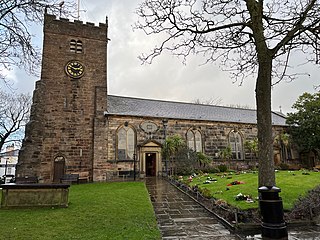
St Chad's Church is an Anglican church in Poulton-le-Fylde, Lancashire, England. It is an active parish church in the Diocese of Blackburn and the archdeaconry of Lancaster. It is recorded in the National Heritage List for England as a designated Grade II* listed building. A church on the site was built no later than the 11th century and may have existed prior to the Norman conquest of England. The tower dates from the 17th century, and much of the remainder of the building from a major renovation in the 18th century, although some of the fabric of the original structure remains. Further renovation and additions took place in the 19th, 20th and 21st centuries.

The Church of St Mary and St Michael is in the village of Bonds, to the south of Garstang, Lancashire, England. It is an active Roman Catholic church in the diocese of Lancaster. The church is recorded in the National Heritage List for England as a designated Grade II listed building.
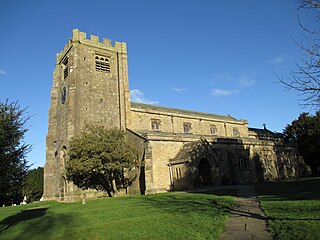
St Paul's Church is in the village of Brookhouse, Caton-with-Littledale, Lancashire, England. It is an active Anglican parish church in the deanery of Tunstall, the archdeaconry of Lancaster, and the diocese of Blackburn. The church is recorded in the National Heritage List for England as a designated Grade II* listed building.

St Michael's Church is in the village of Grimsargh, Lancashire, England. It is an active Anglican parish church in the deanery of Grimsargh, the archdeaconry of Preston, and the diocese of Blackburn. The church is recorded in the National Heritage List for England as a designated Grade II listed building.

Holy Trinity Church, is in the village of Bolton-le-Sands, Lancashire, England. It is an active Anglican parish church in the deanery of Tunstall, the archdeaconry of Lancaster, and the diocese of Blackburn. Its benefice is united with that of St Mark, Nether Kellett. The church is recorded in the National Heritage List for England as a designated Grade II* listed building.
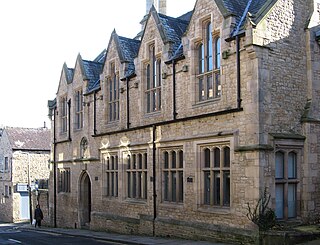
Windermere House is in Middle Street, Lancaster, Lancashire, England. It is recorded in the National Heritage List for England as a designated Grade II listed building. It originated as a school, and has since been converted into flats.

St Peter's Church is in the village of Leck, Lancashire, England. It is an active Anglican parish church in the deanery of Tunstall, the archdeaconry of Lancaster and the diocese of Blackburn. Its benefice is united with those of St Wilfrid, Melling, St John the Baptist, Tunstall, St James the Less, Tatham, the Good Shepherd, Lowgill, and Holy Trinity, Wray, to form the benefice of East Lonsdale. The church is recorded in the National Heritage List for England as a designated Grade II listed building.
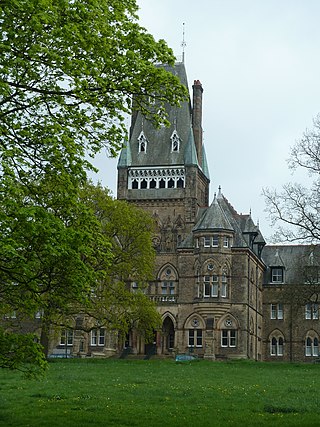
The Royal Albert Hospital was a hospital in Lancaster, Lancashire, England. It opened in 1870 as an institution for the care and education of children with learning problems. By 1909 there were 662 children in residence. Following new legislation in 1913, adults were also admitted. By the time of the introduction of the National Health Service in 1948 the hospital had 886 patients, and by the 1960s there were over 1,000 patients. Following legislation in the 1980s, the patients were relocated in the community, and the hospital closed in 1996. The building was acquired by Jamea Al Kauthar Islamic College to provide Islamic education for girls. The main part of the hospital is recorded in the National Heritage List for England as a designated Grade II* listed building, and its west lodge is listed at Grade II.

The Church of the Good Shepherd is on Tatham Fell in Lancashire, England. It is an active Anglican parish church in the deanery of Tunstall, the archdeaconry of Lancaster and the diocese of Blackburn. Its benefice is united with those of St Wilfrid, Melling, St John the Baptist, Tunstall, St Peter, Leck, St James, Tatham, and Holy Trinity, Wray, to form the benefice of East Lonsdale. The church is recorded in the National Heritage List for England as a designated Grade II listed building.

St John's Church is a redundant Anglican church in Newchurch Road, Cloughfold, Rawtenstall, Lancashire, England. It is recorded in the National Heritage List for England as a designated Grade II listed building.
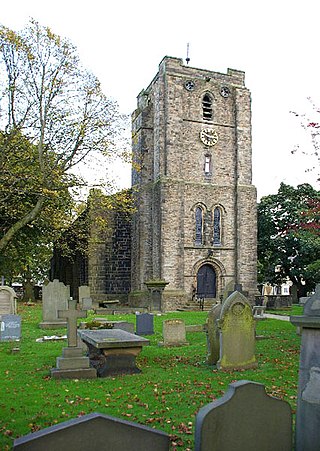
St John the Evangelist's Church is in Church Square in the village of Worsthorne, Lancashire, England. It is an active Anglican parish church in the deanery of Burnley, the archdeaconry of Burnley, and the diocese of Blackburn. The church is recorded in the National Heritage List for England as a designated Grade II listed building.

St Mark's Church is in the village of Dolphinholme, Lancashire, England. It is an active Anglican parish church in the deanery of Lancaster and Morecambe, the archdeaconry of Lancaster, and the diocese of Blackburn. Its benefice is united with those of Christ Church, Over Wyresdale, and St Peter, Quernmore. The church is recorded in the National Heritage List for England as a designated Grade II listed building.

All Saints Church is in Delph Lane, Barnacre-with-Bonds, Lancashire, England. It is an active Anglican parish church in the deanery of Garstang, the archdeaconry of Lancaster, and the diocese of Blackburn. Its benefice is united with those of St Peter, Scorton, and St John the Evangelist, Calder Vale. The church is recorded in the National Heritage List for England as a designated Grade II listed building.
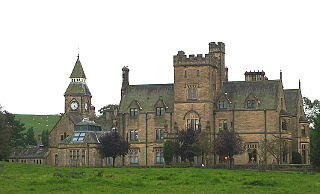
Sedgwick House is located to the west of the village of Sedgwick, Cumbria, England. It was built as a country house, was later used as a school, and then converted into apartments. The house is recorded in the National Heritage List for England as a designated Grade II listed building.

